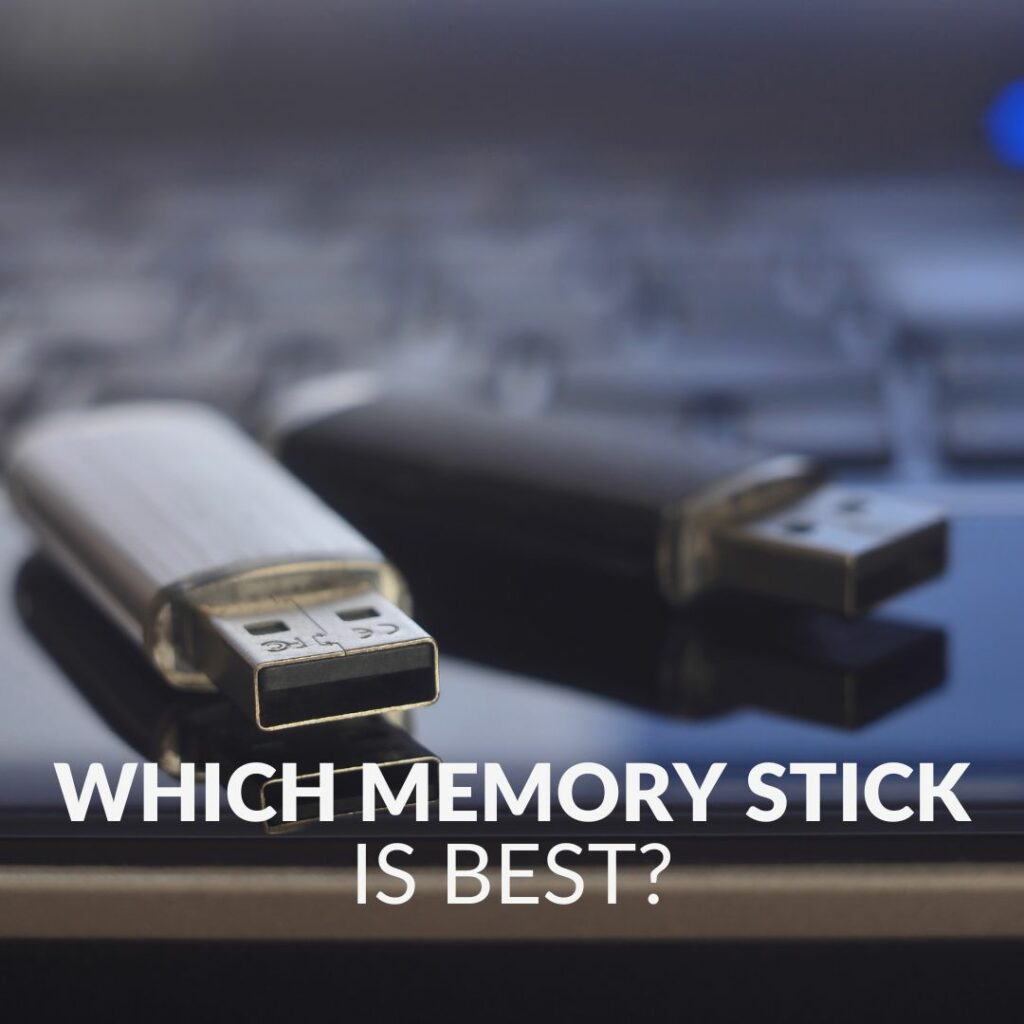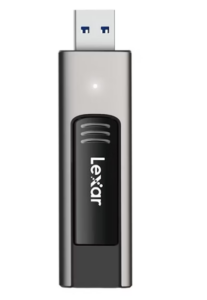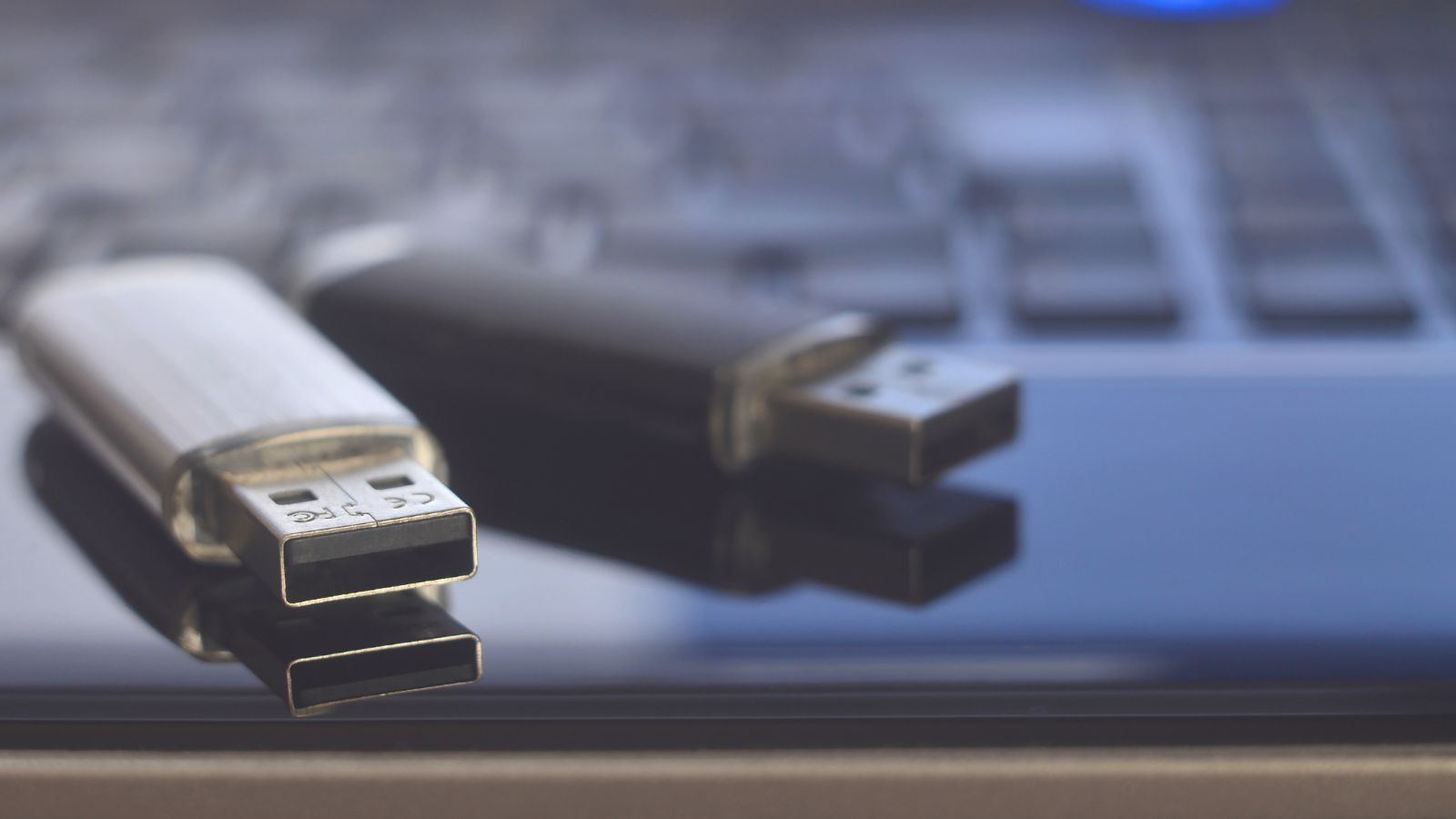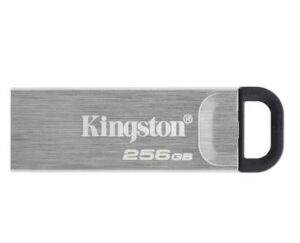Ultra-fast and reliable storage is a must-have for any work or gaming set up. But which memory stick is best?
To ensure you can find the best storage solution for your set up, we’ve decided to showcase the different types of memory sticks, along with a few of our top recommendations.

What is a Memory Stick?
A memory stick, or USB drive, is a portable storage device that will typically plug into a USB port on your laptop or computer. Memory sticks can be used for multiple purposes, including storage and backing up data, along with transferring files between different devices.
You can find several types of USB storage, each with varying storage capacities. The two most common form factors are USB flash and external drives.
USB Flash Memory Sticks:
A USB flash drive is typically no bigger than a pack of chewing gum and can have a storage capacity anywhere between 64, 128, 256, or 512GB. What’s more, these memory sticks also utilise intelligent Flash memory.
Flash memory is non-volatile, meaning it doesn’t require any power to store and retain your data. To keep it simple, your USB flash drive doesn’t need to be permanently plugged into a power source, in order for your files, photos, video, etc, to be stored safely.
USB External Drive:
In comparison to this, an external USB drive is significantly larger and often has a storage capacity ranging from 1 to a hefty 10TB. You can opt for either an HDD or SSD external USB drive.
A Hard drive (HDD) is a non-volatile storage solution and utilises integrated rotating magnetic parts to access and store your files. Whereas, a Solid State drive (SSD) has been built with integrated memory chips, along with intelligent NAND technology to store and access your data. You can read more about the differences between HDDs and SSDs in our dedicated blog article.
Okay… I’ve got my Memory Stick but How do I Use it?
You’ve got your shiny memory stick but what do you do from here?
Both a USB flash and external drive will require a spare USB port on your PC or laptop. You can find the USB ports on either the front or back panels of a PC, or on the side of your laptop.
The USB flash drive can be directly inserted into a USB port, whereas an external drive may require an additional compatible cable. If this is the case, this should come included with your external drive.
If this the first time you’ve inserted your memory stick, your operating system will typically need to automatically install any necessary drivers. Once these have been installed – that’s it!
On a Windows PC, you’ll be able to access your memory stick by going into Files > This PC > click the drop down icon > Select the name of your memory stick.

From here, you’ll be able to copy and paste, or click and drag anything you wish to store or back up onto your USB flash or external drive.
In the Mood to Upgrade?
If you’re looking to upgrade your storage to either a portable USB flash drive or an external hard drive – then look no further. We’ve included a few of our top recommendations down below.

Lexar JumpDrive M900 256GB USB Memory Stick:
- 256GB storage capacity
- USB Gen 3.2
- USB Type-C connectivity
- Up to 400MB/s transfer speed

Lexar JumpDrive M900 64GB USB Memory Stick:
- 64GB storage capacity
- USB Gen 3.1
- Up to 300MB/s transfer speed

WD Elements Portable 1TB USB 3.0 External Hard Drive:
- Portable external hard drive
- 1TB storage capacity
- USB Gen 3.0
- WD SmartWare Pro backup software included

Seagate Expansion 4TB Desktop USB External Hard Drive:
- Desktop External hard drive
- 4TB storage capacity
- USB Gen 3.0
Which Memory Stick Was Best for You?
Did you decide on the perfect portable solution for your set-up? Which did you go for – memory stick or external hard drive? Share with us in the comments.


